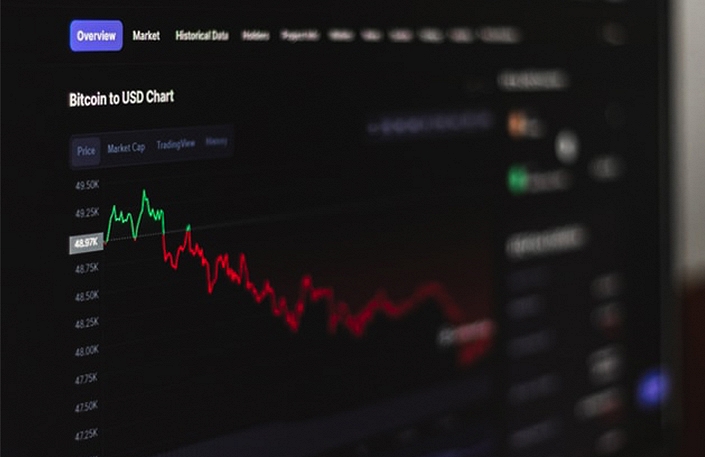On Wednesday, the price of Bitcoin fell back below $20,000 per unit, down about 6% from the previous seven days. Ethereum was also a significant drop, falling to around $960. Bitcoin cryptocurrency value has fallen very sharply this year by more than 70% from its record high of $68,000 at the end of last year.
Volatility is expected in the cryptocurrency market, so even though Bitcoin has slipped below the crucial support level of $20,000, it could rise again quickly. An important question remains for investors: Is the cryptocurrency market showing signs of recovery or is it just another false alarm and an impending bull trap*?
*Bull trap – A bull trap is a false signal that refers to a downward trend of a stock, index, cryptocurrency or other security, which reverses in the opposite direction after a strong upswing and violates the previous support level. This movement traps traders or investors who act on a buy signal and results in losses from the resulting long positions.
Given the ongoing macroeconomic uncertainty, experts warn that there are signs of a bull trap and investors should exercise caution. They also warn that the values of Bitcoin and other cryptocurrencies may continue to fall.
Although Bitcoin and Ethereum have recently recovered from lows of around $17,500 and $880 respectively, Richard Asher, head of OTC trading at cryptocurrency finance company BCB Group, is not yet convinced that the crypto bottom for the year has been reached, saying: “To while we believe that risk assets will rise sharply towards the end of the year, we also see that risks have shifted to yet another cryptocurrency sell-off first. The broader risk climate remains on a knife’s edge”.
The Cryptocurrency Market Is Recovering, But Is It Just A Bull Trap?
Investors often mention that the worst times are behind the crypto sector. BitcoinBitcoin and Ethereum both held above $20,000 on Tuesday, a significant increase from the 15-month lows they hit just two weeks earlier.
However, experts warn that the situation is far from secure, given the ongoing conflict in Ukraine, rising interest rates, rising inflation and rumors of an impending recession. Many are labeling this week’s rise in cryptocurrency prices as a bull trap.
After a strong rally, when the value of a stock or cryptocurrency falls below the previous support level, it turns back down. Basically, it’s a false signal that misleads investors into thinking that the market’s downtrend is over and now is a good time to buy.
According to experts, the cryptocurrency market may experience another sell-off in the coming weeks or even months. According to cryptocurrency expert and educator Wendy O., Ethereum may fall to $750, while Bitcoin could reach as high as $10,000, while venture investor Kavita Gupta expects Bitcoin to bottom at $14,000 and ethereum at $500.
According to Martin Hiesbock, Head of Blockchain and Cryptocurrency Research at Uphold, whether Bitcoin maintains its price above $20,000 has less to do with cryptocurrencies and more to do with the overall geopolitical and macroeconomic situation, which he believes will play a major role in the near future. will not improve. The recent correlation between stock markets and the cryptocurrency market has led to a sell-off in risky assets around the world.
The three main concerns, according to Hiesboeck, are the war in Ukraine, supply chain overproduction and inflation. Bitcoin has yet to prove itself to be the inflation safe haven that its biggest proponents have so far believed it to be.
Is now a good time to buy cryptocurrencies?
Buying cryptocurrencies is risky at any price, not to mention a market downturn, which can last for some time, as the cryptocurrency market is volatile and highly unpredictable.
However, experts believe that now may be a good time to enter the cryptocurrency market as prices are lower than in recent years, provided you have gauged your risk tolerance and can accept losses. There is no such thing as the “right moment” to enter the market, so accept price changes as normal and be prepared for even more potential cryptocurrency price declines. If you can’t deal with sudden market swings that can sometimes reach 15 percent or more in a 24-hour period, don’t invest in cryptocurrencies.
You should also prioritize other areas of your money, such as building an emergency fund, paying off high-interest debt, and contributing to a traditional retirement plan, before putting in an amount you don’t want or can afford to lose.
Financial experts recommend sticking to two for the most well-known cryptocurrencies – Bitcoin and Ethereum, and not to invest more than 5% of your portfolio in cryptocurrencies. Bitcoin and Ethereum’s track record and long-term appreciation, among other important aspects, are said to make them stronger investments.
–


